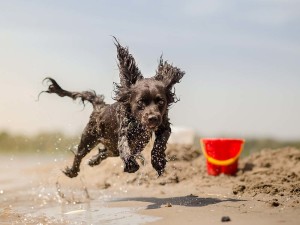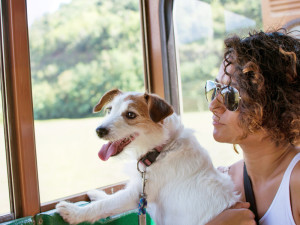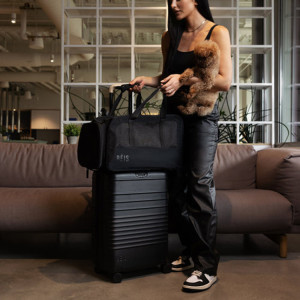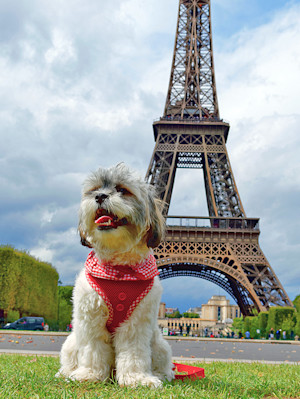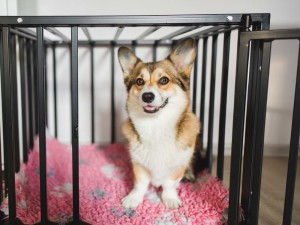Can You Take Your Dog On a Plane? Everything You Need to Know
Pigs can’t fly, but maybe dogs can?

Share Article
In this article:
How to take your dog on a planeopens in a new tab Cabin or cargo?opens in a new tab Major UK airlines’ pet policiesopens in a new tab Can I buy my dog a seat on a plane?opens in a new tab Rules for flying with a dogopens in a new tab How to prepare your dog for air travelopens in a new tab Stress-free flying for your dogopens in a new tab Dog air travel proceduresopens in a new tab Dog air travel FAQsopens in a new tab
It’s that exciting time of year when we’re scouring travel sites for the best summer holiday deals. Whether you’re planning a family trip to Europe or a weekend getaway in the UK, you can’t help but notice those two eager eyes staring up at you. Our dogs are a big part of the family, whether you have kids or it’s just you and your canine companion, wouldn’t it be amazing if they could join the adventure?
But what does that mean for travel?opens in a new tab Do we need to double our journey time and take a boat, or can we bring our dog on a plane? Maybe you’re flying with a service dog or even moving abroadopens in a new tab. Thankfully, airlines have become more pet-friendly in recent years. Most UK airlines now accept service dogs in the cabin at no additional charge, and some even allow small dogs under your seat for an extra cost.
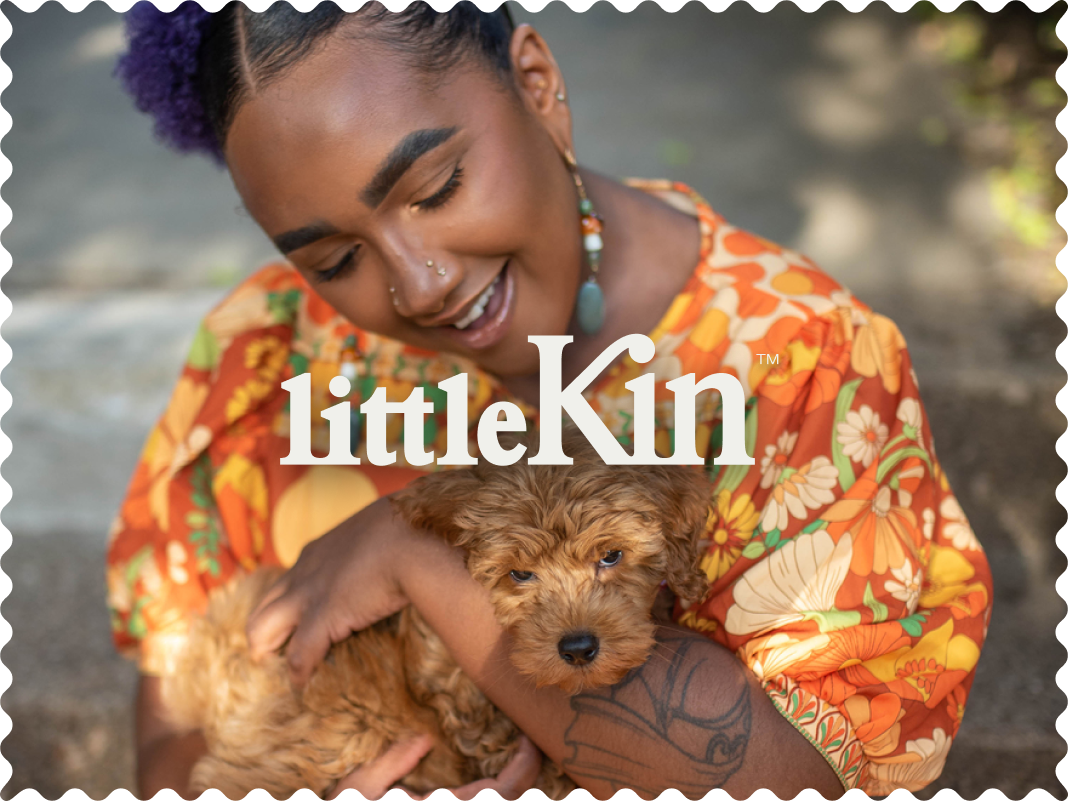
littleKin™ is Kinship’s home just for puppy and kitten parents. Bop over to check out expert advice, new pet tools, and special deals—all curated for your newest family member.
opens in a new tabAs a responsible pet parent, it is important to make sure you weigh up the pros and cons of taking your pup with you. Yes, they’ll love going on an adventure with you and being by your side as you make new memories together, but if you have an anxious dogopens in a new tab, a dog who prefers the familiarity of home comforts or a larger dog who would need to travel in the hold of a plane, then they may actually prefer to stay home at their favourite doggie daycare or with a trusted friend or family member.
It‘s also worth considering whether the destination you have in mind is suitable for your pup. Will it be very hotopens in a new tab? Will it be very busy? Will there be a lot of stray or street dogs your dog will need to watch out for? There are lots of considerations to take into account before you plan to travel with your dog. But never fear, if you decide not to take them with you, they’ll be having just as good of a time chasing balls and receiving lots of extra love and attention as you will be relaxing with a book by the sea. And just think of how good the emotional reunion will be when you return home.
If you do decide to take your pup with you, here’s a guide covering everything you need to know before flying with your dog – including airline policies, preparation tips and expert advice.
How to take your dog on a plane
Flying is already stressful and with an extra set of four legs trotting along, you’ll want to be super organised to avoid any overwhelming situations.
To take your dog on a plane, you’ll need to follow airline-specific guidelines and prepare the necessary documentation. Some airlines allow small dogs in the cabin, while others require all pets to travel in the cargo hold. It’s not just a matter of showing up with your Labrador because you heard the airline is pet-friendly, you need to prepare:
Check airline policies: each airline has different pet travel rules. Some allow small dogs in the cabin, while others require pets to travel as cargo.
Secure proper documentation: depending on your travel destination, you may need health certificates, vaccine records and pet passportsopens in a new tab, which can be expensive (the passport pic will undoubtedly be cute though).
Book in advance: airlines have limited space for pets, so early booking is essential.
Choose an airline-approved carrier: ensure your dog’s crate or carrieropens in a new tab meets airline regulations.
Cabin or cargo, can I take my dog on a plane?
The way your dog can travel depends on their size and the airline’s policies.
Cabin: some airlines allow small dogs under a certain weight (usually 6-8kg) to travel in a pet carrier under the seat.
Cargo: larger dogs must travel in the cargo hold. While this may seem daunting, cargo areas are climate-controlled and follow strict safety regulations.
Exceptions: service dogs are allowed in the cabin on most airlines, free of charge.
Are all breeds allowed to fly?
Not all dogs are cleared for take-off. Some breeds face restrictions due to safety concerns. Brachycephalic dogs such as French Bulldogs and Pugs usually can’t fly in the cargo hold because of breathing issues.
“While they can often travel in the cabin, there are risks,” says Dr Kate, a vet based in Northern Ireland. “Brachycephalic dogs struggle in extreme temperatures or stressful environments, so always check with your vet and the airline before booking their ticket.”
For larger dogs, it’s usually cargo or no-go unless they’re trained service animals. And heads up, some airlines completely ban certain breeds, such as Pit Bulls.
Major UK airlines’ pet policies
Easyjet
EasyJetopens in a new tab only allows service animals on select flights. Assistance dogs (specially trained to support individuals with disabilities and certified by a recognised organisation) can travel for free. Passengers must notify EasyJet at least 48 hours in advance for approval.
Ryanair
Ryanairopens in a new tab only allows assistance dogs in the cabin, just like EasyJet. They can fly for free but must be well-behaved, stay on a lead and be approved at least 48 hours before departure.
KLM
On most KLM flightsopens in a new tab, small dogs up to 8kg (including their carrier) can fly in the cabin if they fit under the seat in a closed kennel or travel bag (no lap sitting allowed). Heavier pets (up to 75kg with their carrier) may travel in the hold. Fees range from €70–500 (roughly £60–430) per one-way trip, depending on the route and airport. To book a cabin spot, contact KLM directly.
British Airways
On British Airways UK flightsopens in a new tab, dogs can only travel as cargo except for service dogs, who fly in the cabin for free. Specific regulationsopens in a new tab apply, and you must pre-book online. Cabin travel costs vary by size and destination, ranging from £2,600–8,000.
Jet2
Jet2opens in a new tab only offers services to carry registered assistance dogs on all UK domestic flights and international airports where national rules permit. There is no additional cost for service dogs.
Lufthansa
Small dogs under 8kg can fly in the cabin with Lufthansaopens in a new tab, while larger dogs must travel in the hold. To bring a pet in the cabin, you must contact the airline directly, with fees ranging from €70–100 (around £60–86). Larger dogs in the hold incur higher costs, while service dogs can travel in the cabin free of charge.
TUI
Pets under 6kg can travel in the cabin with TUIopens in a new tab, with one pet allowed per passenger for a fee of around €50 (£43) each way. Larger pets can be transported as checked baggage in the cargo hold, costing between €95–115 (£83–95) depending on the destination. Service dogs fly in the cabin for free.
Can I buy my dog a seat on the plane?
UK regulations generally don’t allow pets to travel in a cabin seat (how fun would a furry plane neighbour be though?) Even airlines that permit cabin travel require dogs to be in an approved carrier under the seat. The only exception is assistance dogs, which can travel free of charge in designated areas. Some airlines may have more lenient rules that allow you to cuddle your pet outside of take-off and landing so be sure to check with your chosen carrier to confirm.
For those wanting more space for their pets, private charter services such as BarkAiropens in a new tab offer a premium alternative, but costs can range from thousands to tens of thousands of pounds.
Rules for flying with a dog
Just as you need to think carefully about packing your own luggage before you fly, you also need to prepare the essentials for your dog before taking them on a flight. The exact requirements for your pet will depend on your destination and the rules change regularly. It’s a good idea to go through a pet travel company to ensure your dog is covered and safe to enter the country.
If you’re traveling to an EU country or Northern Ireland, it is required to carry out the following procedures. For non-EU, there are additional rules.opens in a new tab
Microchip your dog
You must get your pet microchippedopens in a new tab before or at the same time as their rabies vaccination. If you do not, they’ll need to be vaccinated again.
Vaccinations
Most countries require a rabies vaccination but it’s important to check the specific requirements for the country you’re flying to. “Don't leave this until the last minute," says Dr. Kate. "You need to allow enough time for rabies vaccinations or requirements to be completed before you travel.”
Get a pet travel document
Get an animal health certificateopens in a new tab from your vet if you’re going to an EU country or Northern Ireland.
Get a tapeworm treatment for your dog
A vet must treat your dog for tapewormopens in a new tab and record it in either an animal health certificate or a valid pet passport if you’re traveling directly to:
Finland
Ireland
Malta
Northern Ireland
Norway
The treatment must have been given no less than 24 hours and no more than five days (120 hours) before you arrive.
Check your return journey
The rules for returning with your pet to Great Britain (England, Wales and Scotland) depend on what country you’re coming from.
If you’re traveling with more than five pets
Unless you are attending/ training for an event or exporting for commercial purposes (which you’ll need proof of), you can not take more than five pets to an EU country or Northern Ireland.
Your dog’s luggage
Packing for your dog is just as important as packing for yourself. It’s a good idea to write a checklist of all items your dog will need both on the flight and at their destination.
The most important accessory for flying with your dog is an airline-approved carrier, as each airline has its own size and weight restrictions. Make sure your crate complies with these rules and provides enough space for your dog, especially for longer flights. If you’re using a relocation service, they may provide an approved crate.
Attach a secure water bowl to the crate for dogs traveling as cargo, and consider freezing one to ensure hydration during the journey. Although airlines will vary, it’s generally the parent’s responsibility to provide food and water for the dog. If your dog is flying in the cabin, a collapsible water container is sufficient. Don't forget to pack your dog’s harness, lead, toys, bedding and food bowl in your carry-on to provide comfort at your destination.
How to prepare your dog for air travel
Going on a giant machine in the sky isn’t typical for a dog (we assume), so you can’t exactly treat it like a normal day for your dog.
Dog behaviourist, and separation anxiety expert, Jo Sellers from Pippin PetsDog Trainingopens in a new tab shared some advice on preparing your dog for a flight:
Acclimate them to the carrier: the carrier may be different from any crate at home, so get it months in advance, and slowly build up the time for your dog to be in there. The earlier you can do this, the better – especially if they don’t normally use a crate. Don’t forget to set up the water supply so your dog can learn to use any new bowls/bottles in the carrier. If in the cabin, carry a portable bottle/bowl for them.
Limit food intake before flying: avoid feeding your dog a large meal about four-six hours before travel to prevent motion sickness or upset stomachs. Plan the timing of their meals around the flight time and adjust for a few days beforehand. Small treats are fine if they are in the cabin, just don’t give them too much.
Exercise beforehand: to help your dog settle, allow them to stretch their legs, have sniffing time, and puzzle feeders/find-it games to satisfy their exercise needs without building up their adrenaline hormones, so no high-energy chasing games. Give them time to go to the toilet just before you put them in the carrier and hand them over.
How to keep your dog stress-free on the airplane
“Flying can be extremely stressful for dogs especially elderly dogs as well as those with health conditions or behavioral issues,” says Jo. She suggests trying the following:
Use calming techniques: consider pheromone sprays or vet-approved calming supplements. Tell your vet when you are traveling, as they may be able to prescribe anti-anxiety meds for the trip if needed, and ensure you have enough for the return journey too. Test these a few times before your trip to ensure there are no side effects. Sedation is not suitable, as there can be complications in your dog at altitude, and many airlines prohibit this. If your dog is in cargo, you might even be able to fit a small pet cam into the carrier, so you can monitor a live feed on your phone (although flight mode may disallow this). It might be best not to watch as it’s out of your hands, so just ensure you can relax and remain calm when you are reunited at the other end.
Keep them comfortable: ensure they have their favourite toy or blanket in the carrier, and if they are in cargo, an unwashed T-shirt of yours so it smells familiar to them.
Monitor their hydration: provide access to water before and after the flight. Many carriers have a setup for non-spill containers or bottles, so ensure these are topped up before the flight.
In the cabin: be respectful that not everyone loves dogs or may be allergic, and be prepared with pads and bags for any toilet accidents.
Procedures to follow the day of travelling with your dog
Arrive early to complete any necessary pet check-in procedures. You may need to go to a different part of the airport to drop off your pet carrier if they are in the cargo section, so check in advance where you need to be and at what time.
Ensure your dog’s crate is properly labeled and secure, and bring extra security just in case.
Double-check documentation requirements for your destination. The last thing you need is your trip canceled due to something missing in your forms.
Final thoughts: can you take your dog on a plane?
Flying with your dog might once have seemed barking mad but as airlines become more pet-friendly and dogs increasingly seen as part of the family, people are having adventuresopens in a new tab all over the world with their best friend by their side. Whether they are in the hold or under your seat, ensure you have the correct documentation and take the right precautions before you jet off. Most airlines have their own policies so it’s vital to double-check rules and regulations to avoid stress and disappointment at departure gates. All that’s left for us to say is happy flying!
Frequently asked questions: can you take your dog on a plane?
How to choose a dog carrier for air travel?
Select an airline-approved carrier that allows your dog to sit, stand, and turn around comfortably. Check your airline’s specifications for exact size limits. Soft crates may be more suitable as they can fit under the seat better.
Which airlines allow dogs in the cabin in the UK?
Most UK airlines do not allow dogs in the cabin, except for assistance dogs. However, some international airlines, like Lufthansa and KLM, allow small pets in the cabin.
How much does it cost to take a dog on a plane?
Costs vary depending on airline and pet size:
Cabin travel: around £50–150.
Cargo travel: £200–1,000+, depending on weight and route.
Private charter flights: £1,000+
Additional costs for vaccines, passports and documents will vary.
Can my dog travel with me on a plane?
Yes, but in most cases, they will need to travel in the cargo hold unless they are a recognised assistance dog or meet the airline’s weight restrictions for cabin travel. Many airlines have banned specific breeds, like pit bulls, from flying altogether and there may be certain restrictions for brachycephalic breeds. It can also add a significant cost to your trip so you might want to weigh up the pros and cons of taking your furry friend on board.

Nuala McHugh
Nuala is a writeropens in a new tab with a background in PR. She has worked with brands including Jollyes, Universal Studios, and Amazon. Based in Northern Ireland, she is now doing what she loves most: writing with her clingy cockapoo Bobby by her side.
Related articles
![a woman and her dog sit in a camper van door]() opens in a new tab
opens in a new tab5 Travel Lovers Who Take Their Pets on Every Adventure
Think a life on the road means leaving your pet behind? These pet parents disagree...
![Human and golden retriever greeted by captain at the stairs of a private jet with BarkAir logo]() opens in a new tab
opens in a new tabNew Dog-Friendly Airline Takes Off in the UK This Month
On these flights, dogs come first and humans second
![A woman standing next to a suitcase with a dog carrier on top while holding her dog.]() opens in a new tab
opens in a new tabThe Best Dog Carriers For Planes, Trains and Automobiles
Whether you’re driving across the UK or flying internationally, your pup can comfortably tag along
- opens in a new tab
How Can I Get a Pet Passport in the UK?
Don’t start packing those treats just yet...
